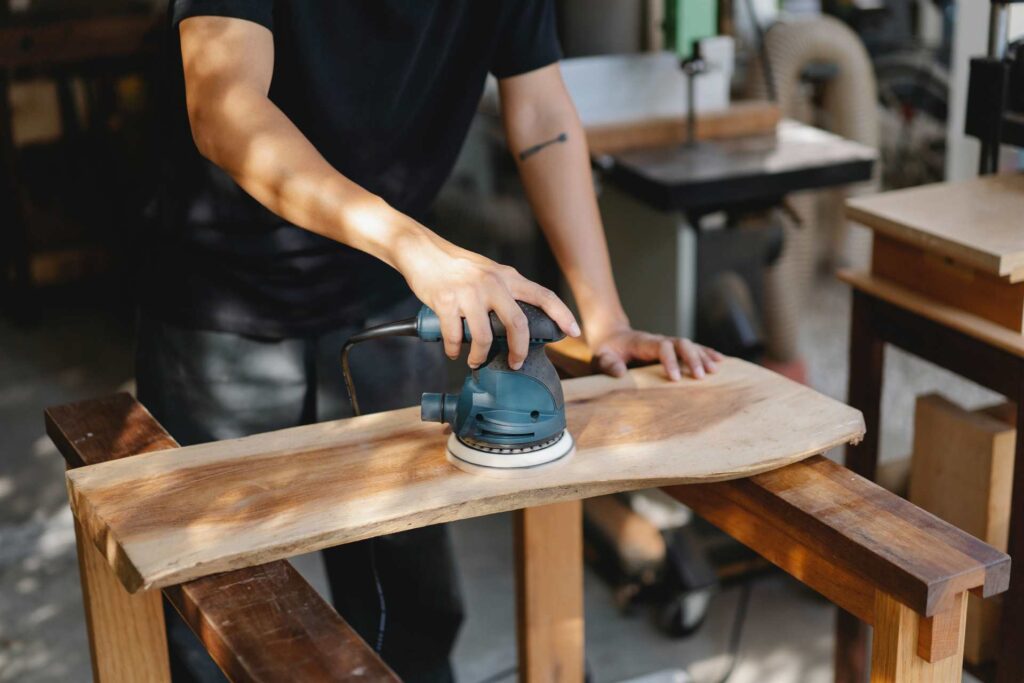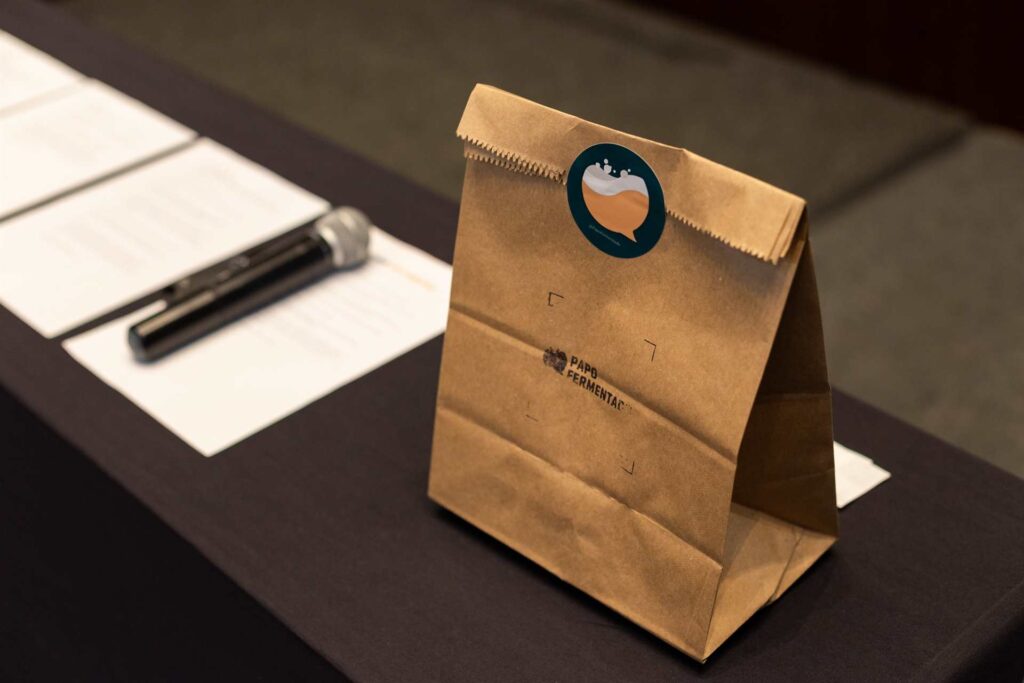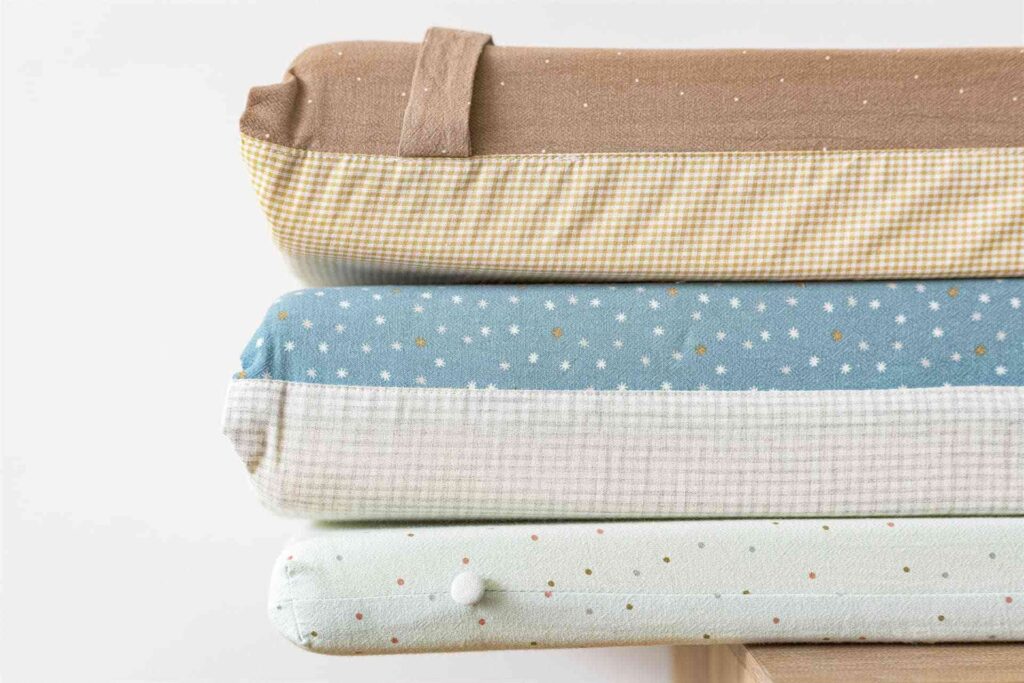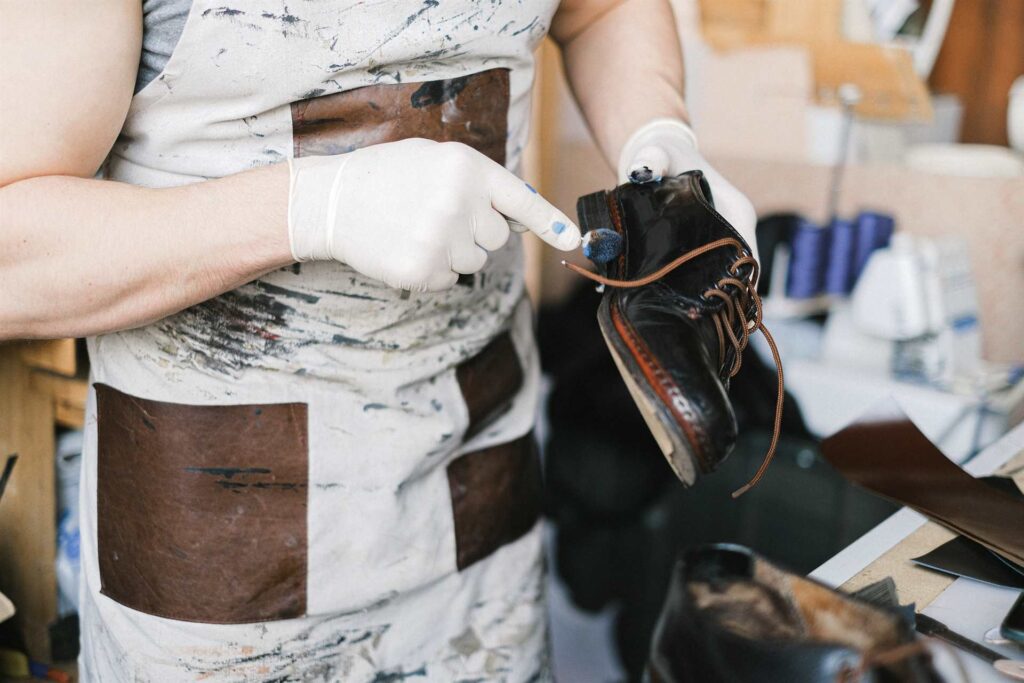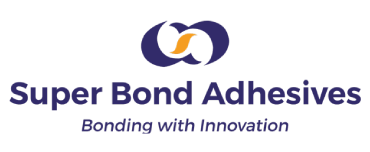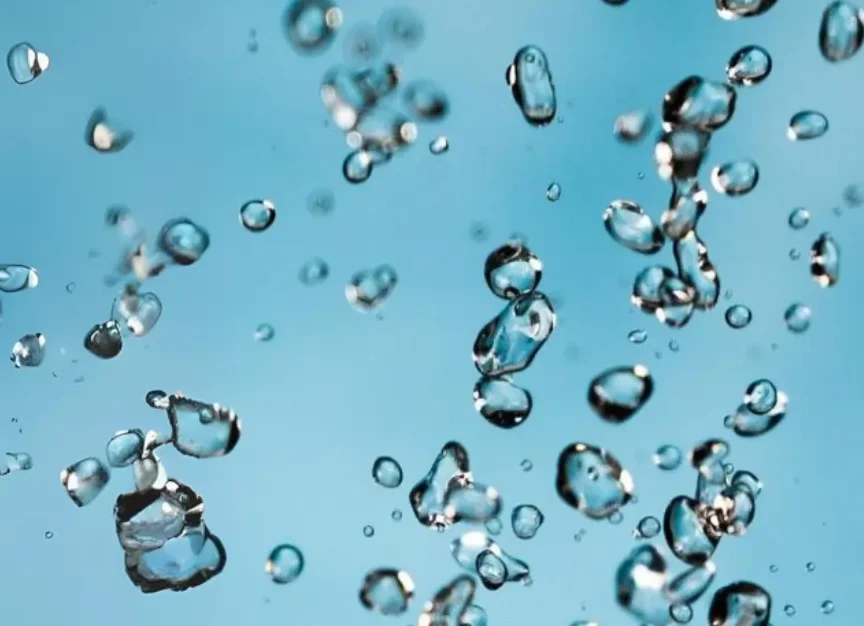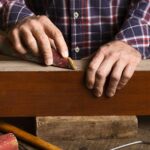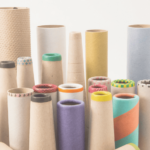In today’s fast-paced manufacturing world, among the many bonding solutions available, water based adhesives stand out as one of the most versatile and eco-friendly choices. From bookbinding and packaging to woodworking and textiles, these adhesives have steadily become the preferred option for industries seeking strong bonds without compromising on safety or sustainability.
Unlike traditional solvent-based adhesives, which often release harmful fumes and require special handling, water-based adhesives utilize water as their primary carrier. This makes them safer to use, better for the environment, and compliant with increasingly stringent global environmental regulations.
In this blog, we explore how these adhesives are made, their key advantages, and the wide range of applications where they deliver exceptional results.
What are water based adhesives?
Water based adhesives are solution-based adhesives typically made only from water as the solvent. These adhesives include fabric glue and wood glue. Water based adhesives are designed to provide significant adhesion without the harmful effects of solvent products.
Water based adhesives are supplied premixed (solutions) or dry (powders). They must be mixed with water to create their adhesive properties.
These adhesives are used in a variety of applications, such as packaging, woodworking, textile production, and even book binding. These adhesives are usually chosen because they are nontoxic and offer no strong fumes as are encountered in traditional adhesives.
How are water based adhesives made?
Water based adhesives are formed when a selected polymer is dispersed in water with surfactants. Then the polymer is mixed and heated to achieve uniform dispersion. To enhance the adhesive, additives may be included. This formulation is tested, adjusted and then packaged for storage. This is the general manufacturing process for water based adhesives. Here’s how SuperBond does it:
-
Selecting the polymer
Water-based adhesives utilise polymers suspended in water, not dissolved in harsh solvents. SuperBond selects the right end-use high-performance polymers, such as:
- Polyvinyl Acetate (PVA)—great for adhesives bonding porous substrates like wood, paper, and cardboard.
- Ethylene Vinyl Acetate (EVA)—widely used in textiles and packaging due to its properties like flexibility and heat resistance.
- Acrylics, which have important attributes of water resistance for many demanding industrial applications.
These are in the form of liquid emulsifiers (latex) or fine powders that ideally should be dispersed in water to exhibit adhesive properties.
-
Dispersing polymers with water
Polymers do not naturally mix with water on their own. At SuperBond, we add surfactants to help these polymers mix well with water to achieve adhesive properties.
Surfactants loosen water molecules so that polymers can spread well. Surfactants encapsulate the polymer particles like little shields, which prevents the polymer particles from clumping.
By adding surfactants, we can ensure that the polymers have longevity.
If surfactants are not added to the product, polymer particles would stick together, and they would not disperse in the water like oil in water.
-
Precision Mixing and Heating
Our expert technicians at SuperBond perform careful dosing and mixing to maintain consistency and meet industry requirements for strength, flexibility, and non-toxicity.
The raw materials—polymers, surfactants, water, and any additives—are placed in high-quality mixing equipment, typically temperature-controlled reactors, where the homogenization occurs.
After this mixing phase, the mixture is heated, raising the temperature to between 60 and 80°C (140-176°F). This temperature ensures flowability for optimal dispersion and stability. While heating, both the polymers dissolve, and the polymers, surfactants, and water interact better, offering optimal distribution while providing a stable, ready-to-use adhesive.
During mixing, the temperature is carefully controlled. The blend is thoroughly mixed with high-shear mixers to achieve even consistency. Temperature and mixing time are varied based on the type of adhesive and formulation being made.
The aim is to disperse the polymers and additives throughout the water evenly. This will produce an even emulsion that does not clump together, and every part of the adhesive is equally sticky and has the same performance characteristics. Mixing will also ensure that the adhesive doesn’t separate or become unstable before or during use.
The combination of high-shear mixing and heating produces a smooth, stable adhesive. The adhesive coats consistently, dries uniformly, and forms high-strength bonds when applied.
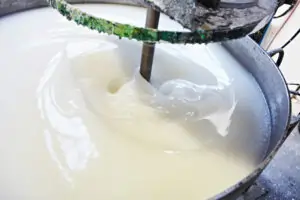
-
Adding Additives
To further modify the properties of the adhesive, certain agents are added after mixing and heating the polymers and water. Additives enhance the performance of the adhesive in specific atmospheres and applications.
Superbond water-based adhesives are tailored for specific challenges by adding:
-
Plasticizers
Plasticizers solidify the dried glue with added flexibility, providing the water-based glue with resistance to movement and vibrations. They also reduce the likelihood of cracking and brittleness over the life span of the glue. Plasticisers are added to adhesives used in book binding or fabric applications.Eg- Phthalates
-
Preservatives
Preservatives prevent bacterial or fungal growth in the water based glue during storage and extend the shelf life of the adhesive to 18-24 months.
-
Thickeners
Thickeners are added to modify and adjust the texture, viscosity and bulk of the adhesive to suit specific uses from fine applications to heavy-duty bonding. E.g.- Cellulose.
Our adhesives contain components like 4-Meta, a bonding monomer that improves adhesion strength by penetrating surfaces more effectively.
Additional additives form, addens and make supplementary components that SuperBond adhesives are multi-strength, multi-flexible, multi-durable and quick drying. Additives provide more positive performance configurations (and performance) for our adhesives, adhering to many surfaces and in many conditions, including moisture, dryness, heat, and more.
We use safe, non-toxic additives, which means SuperBond water based adhesives are better for the environment and the user.
5. Rigorous Testing and Adjustment
Superbond water-based adhesives go through a thorough and multi-layered process dedicated to guaranteeing that every batch meets strict quality requirements before it’s shipped to customers. To ensure that the adhesive produced is manufactured according to our standards (SOP), and to make sure all products sold are consistent and reliable, we perform stringent quality control checks on every batch. All batches that do not meet our standards are either reprocessed or discarded. Batch testing includes: bond strength, flexibility, heat resistance, non-toxicity, viscosity, ageing resistance, adhesive curing time and performance under different environmental conditions, including heat, humidity, or freezing conditions.
Our technicians at SuperBond carefully compare the results from these tests with internal benchmarks or customer specifications. The formulation or processing parameters, such as polymer ratios, adding additives or heating and mixing cycles, are adjusted, and the batch is retested until it passes all the criteria. If the required standards are not met, even in just one parameter, the batch is not released for sale.
To ensure full traceability, the results of each tested batch are fully documented, adjustments if any and are allotted a unique batch number. This allows us to maintain a consistent quality with every shipment.
At SuperBond, we are committed to continuous research and development. Hence, improvements from testing feedback are incorporated into future batches to ensure the products remain industry-leading and are compliant with evolving industry standards.
6. Packaging to preserve performance
SuperBond’s water based adhesives are packaged in such a way that the adhesive retains its quality, is easy to use and meets the needs of various industries like packaging, book binding, wood-working and more. The finished adhesive is cooled to 25°C to prevent condensation.
Depending on the volume required by the customer, SuperBond water based adhesives are packed in a variety of containers ranging from small tubes for household use to large drums for industrial applications. For food-related packaging adhesives, containers are selected to comply with strict food safety regulations and ensure there is no contamination.
The finished adhesive is transferred into mixing tanks to specialised sterile filling lines which dispense the adhesive into selected containers and offer precise and consistent quantities to avoid spillage or wastage.
The containers are sealed after filling them to avoid leaking and allow for functional adhesion. They are labeled to identify batch number, produce and expiration dates, storage conditions, safety considerations, and product definitions.
At SuperBond, we customise packaging as per client needs, such as easy-to-dispense bottles, tamper-evident packaging or resealable options for repeated use. We also offer bulk packaging for industrial buyers, with inventory management support offered for major clients.
What are the advantages of water based adhesives?
Compared to traditional solvent-based adhesives, water based adhesives offer several important advantages which include:
-
Eco-friendly and low emissions
Water based adhesives, which utilise water as the primary carrier, are eco-friendly, high-performance bonding solutions. They effectively reduce the reliance on harsh solvents, offering a more environmentally friendly option.
Due to their near-zero volatile organic compounds(VOCs) emissions, water based adhesives comply with global environmental regulations. They do not pollute indoor air, making them a good choice for industries looking to be more environmentally responsible.
Our water based adhesive formulas, like Galaxy 12, exceed regulatory standards by incorporating more than 30% plant-based polymers. This minimises ecological footprints.
-
Superior Bonding Versatility
Due to their bonding ability across various surfaces such as wood, paper, cardboard, textiles, etc., water based adhesives are suitable for various industries like packaging, woodworking and for applications like lamination, book binding, etc. Our water based adhesives at SuperBond have tailored polymers like PVA for wood, acrylics for moisture resistance, etc., to deliver industry-specific bonds.
-
Strong Bond and Fast Setting
The water content in the adhesives permeates through the porous surfaces of wood, paper, fabric, and cardboard to create a strong, permanent bond. Superbond’s water based adhesives consist of technologically advanced polymer blends (PVA, acrylics, etc.) that achieve durable industrial-grade bonds for furniture, heavy-duty packaging, and exterior applications.
Superbond water-based adhesives are designed to give a reliable bond and quick set time, and dry quickly, often in 20-30 minutes, saving time during the manufacturing process. Generally speaking, Superbond water-based adhesives don’t cure from high heat, which saves energy you can use in other places and for heat-sensitive materials. Faster drying means faster production: factories assemble faster, pack faster, and ship faster.
-
Cost Effectiveness
Water-based adhesives are cost-effective due to lower raw material costs, as these adhesives are water based carriers. By drying at room temperature, these adhesives reduce energy consumption and operational expenses. Water-based adhesives also clean up easily with water, reducing the cost for harsh cleaning chemicals.
SuperBond’s water-based adhesives, with an 18-24 month shelf life, reduce packaging costs by 15-30%.
-
Durability in Harsh Conditions
Superbond’s water-based adhesives have been specifically formulated with the goal of dramatically improving performance against extreme humidity, UV, and temperature. Our adhesives utilise proprietary plasticisers that provide additional moisture resistance and enhance flexibility, which makes them well-suited for wood flooring in humid climates or outdoor applications. Superbond also uses specially formulated freezer-grade water-based adhesives that can maintain adhesion at -29 degrees C.
Superbond is the preferred choice for companies that value reliability and sustainable development because of its strong bonding power, versatility to market in every industry, and compliance with global environmental standards. SuperBond is committed to innovation to ensure its adhesives continue to help businesses and the environment.
What are the different uses of water based adhesives?
Super Bond Water-Based Adhesives are designed to deliver reliable performance across multiple industries. From bookbinding and packaging to woodworking and lamination, these adhesives provide the strength, flexibility, and efficiency needed in modern manufacturing.
Below are some of the key applications where Super Bond has made a strong impact.
Bookbinding
Super Bond Water-Based Adhesives have changed the book binding industry by offering advanced performance features. All variants of Super Bond adhesives can be used for binding many types of books – paperback, hardcover, and special.
Super Bond has amazing bonding properties for the covers of books; it bonds to the spines of books with different types of cover materials such as cloth, leather and paper, and it works with plain pages or colored pages. With Super Bond adhesives, the pages can maintain their integrity and the pages can open and close smoothly and successfully for use.
The application of, or how we bond, endpapers is another important application. This is where Super Bond adhesives join the first and last pages of the book to the thickness of the covers, so beginning and ending page sheets can be attached – professionally.
It can also bond other non-porous materials like (at least) plastic, metal, or similar materials, essentially enhancing the versatility of the product for speciality books.
When book binding, the flexibility of the adhesive is important. Fast methods (drying) in production have great time-saving advantages for commercial book binding. Also, the Super Bond adhesives can be used with typical bookbinding equipment or other equipment used for book manufacturing.
Super Bond has specific cleaning and formulations that include Plock PG, Prime, Ultra and Tricol FD – for use in book binding. All formulations possess useful adherence features with a plethora of types of paper, ensuring durable and long-lasting building-like bonds.
Paper Bag Manufacturing
The paper bag industry is built upon Super Bond Water-Based Adhesives for strong, reliable packaging. A significant role these adhesives play is in the making of eco-friendly paper bags.
After the paper sheets unwind and get cut, they are then folded and scored in a certain manner so that the paper container will shape correctly. Water-based adhesives are applied at certain locations (flaps, seams, and edges) to build the bags and give them durability.
Super Bond Water-Based Adhesives provide extremely good bonding strength, specifically formulated for paper substrates, while offering moisture resistance for difficult applications.
The P-40, P-50, P-51, P-60 and the Tricol LFD adhesives are developed for paper bag applications, from everyday grocery bags to custom packaging.
Paper Cone and Tube
Super Bond Water-Based Adhesives meet the textile and packaging industries’ need for specialised paper cone applications. These adhesives are a necessity in the manufacturing of paper cones for yarn winding and industrial applications.
Super Bond Water-Based Adhesives are efficient synthetic resin emulsion-based adhesives specifically developed for paper tube, cone, can, winding, board-to-board bonding, and e-fluting solid lamination applications.
These needs are critical in the textiles industries, which move large amounts of paper cones for winding yarn; these products must be made from adhesives that will withstand the necessary tension and generate long-term adhesion within a variety of conditions.
Carton Manufacturing Applications
Super Bond Water Based Adhesives have been formulated specifically for adhesion and sealing of cartons/boxes with reliability.
These adhesives provide from paperboard to paperboard adherence, and are strong on both coated and uncoated substrates. This ensures carton components will be joined securely during production.
These adhesives are compatible with automated adhesive systems and allow you to manufacture at higher speeds, which enhances production efficiency. The formulations can easily integrate with a carton production operation.
The adhesives are also economical overall, as they provide great value at the right cost, and they help to bring down your production costs. Their speed of use makes them better for high-speed lines.
The adhesives meet the strictest packaging regulations for food contact. Therefore, they are used on both direct and indirect food contact packaging applications.
Super Bond also provides several specific formulations, such as P50, Plock Optima, PT-28, and PT-35 adhesive. These are designed specifically for carton sealing applications.
Membrane Door Manufacturing
Water-based adhesives are commonly used in the production of membrane doors.
Membrane door applications are bonded wood frames with a thin decorative membrane surface. Water-based adhesives produce durable, strong, and exacting bonds while maintaining the structural integrity of the doors.
They can be more environmentally friendly and lower in toxicity than solvent-based adhesives, producing a safer working environment.
Super Bond MPU 888 is designed to provide maximum bond strength with high flexibility. It also has faster drying and heat resistance.
MPU 1000 is characterised by high viscosity, providing excellent gap filling. This makes it ideal for demanding applications that require precision and durability.
Lamination Adhesive Applications
Super Bond Water Based Adhesives are commonly used in lamination. They are used in the process of bonding two or layers of material in a laminated state in both the wet lamination process and the dry lamination process.
For the wet lamination process the adhesive is applied directly to the substrate surface. The dry lamination process uses a carrier material such as film or paper. Lamination requires properly preparing the surface of the material for positive bonding (attachment) of the components.
It is important to note that two or more bonded materials need the same backing material. Our water based adhesives adhesives deliver predictable viscosity performance, fast initial tack, and good performance durability. They also perform in weather extremes in moisture and temperature.
Each product addresses a need for laminated assembly applications.
- DL 2000 – Flexible packaging.
- L 490 – Paper to paper.
- L 500 – Film to film.
- LM 6000 – metalised film lamination.
Side-Pasting Adhesive Applications
Side-pasting adhesives are essential in carton and corrugated box production.
Water-based side-pasting adhesives are applied to the flaps or edges and then pressed down to create side pasting. They offer good durability and moisture resistance, ensuring consistent performance.
Super Bond HT-1 is made for applications with extreme heat. Super Bond HT-2 offers strong bonds with more flexibility than HT-1. Super Bond Plock111 offers outdoor durability in addition to weather resistance and UV resistance.
Woodworking Applications
Super Bond Water-Based Adhesives are used in the woodworking industry to bond wood-to-wood and wood-to-other materials. They find extensive application on furniture, cabinets, boats, instruments, wooden toys, carved items, panelling, and flooring. The adhesives offer tough, flexible, and moisture-resistant bonds.
They have good wet tack, fast drying times, productivity in high-volume applications, and environmentally friendly formulas acceptable for industrial applications.
Super Bond adhesives form strong bonds with hardwood, softwood, and engineered wood, demonstrating their versatility in woodworking applications.
Super Bond Water-Based Adhesives combine performance, safety, and sustainability in a reliable product that meets the needs of various industries. For bookbinding and packaging to woodworking and lamination, they provide tough, durable, and flexible bonds suitable for the particular demands of contemporary manufacturing. Not only do their environmentally friendly formulations meet international standards, but they also benefit companies pursuing sustainable development.
With a precise process of manufacturing, stringent quality checks, and endless innovation, Super Bond provides every batch of adhesive with reliable performance.
By selecting Super Bond’s water-based adhesives, our customers are not only receiving an adhesive but a solution to be more efficient, more durable, and more environmentally friendly.



